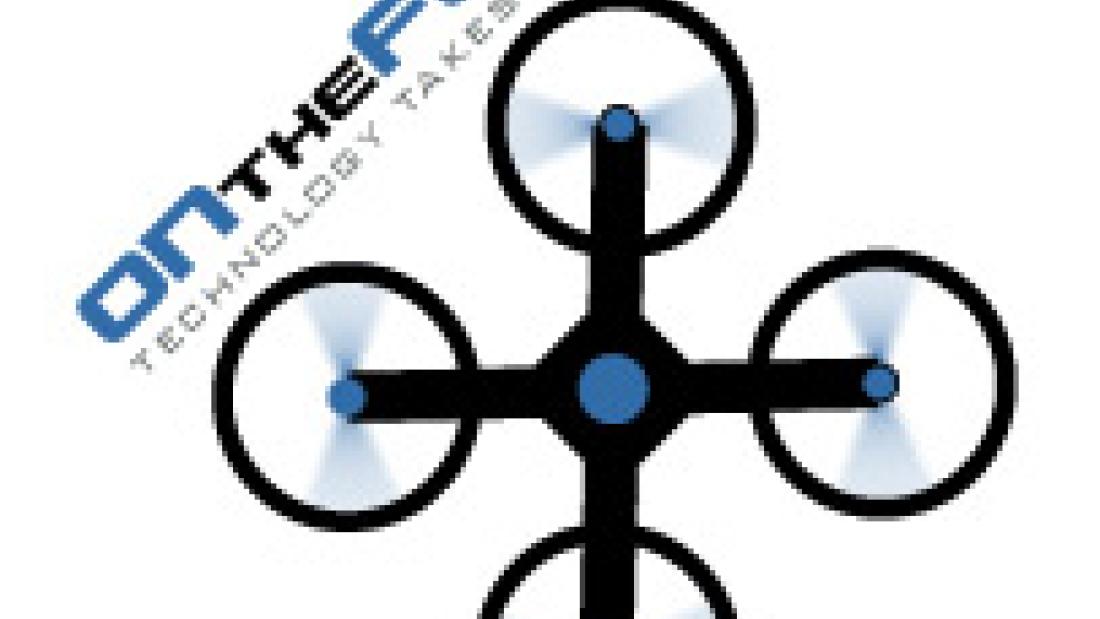
Soar With the Reuben H. Fleet Science Center’s New Exhibition: ON THE FLY: TECHNOLOGY TAKES OFF, Making Its World Premiere on Friday, August 2, 2013!
San Diego, CA—July 9, 2013—On the Fly: Technology Takes Off is a new exhibition making its debut at the Reuben H. Fleet Science Center on Friday, August 2, 2013. It will remain at the Fleet through the end of December 2013. The exhibit should be available for pre-arranged media demonstrations starting Monday, July 22, with a VIP Media event scheduled for Thursday, August 1, 2013.
Whether through the air, on the ground or in the water, the use of unmanned aerial vehicle (UAV) technology holds enormous potential to make individuals safer, more secure and more productive. These systems allow police, fire and other first responders to locate missing children, help fight wildfires and respond to natural disasters. They assist the Coast Guard in rescue missions and help the Border Patrol keep our borders secure. They boost agricultural production and efficiency and allow us to better protect the environment. And they create high-quality, well-paying jobs across the country in a variety of fields.
On the Fly: Technology Takes Off will center on a demonstration presented throughout the day in the Fleet’s Main Gallery, using small-scale unmanned aerial vehicles (UAVs). The demonstration provides an exciting visual display of choreographed UAVs. These UAVs use an electronic control system driven by computer software to guide their flight. The demonstration for On the Fly will be controlled by a laptop. The UAVs use symmetrically pitched blades, which can be adjusted as a group. Control of vehicle motion is achieved by altering the rotation rate of one or more rotor discs, thereby changing its torque load and thrust/lift characteristics. Very robust and stable, each is equipped with an embedded high-definition camera enabling video and photo recording and sharing. With their small size and agile maneuverability, these UAVs can be flown indoors in an intricate performance.
The UAV demonstrations will take place in the “UAV arena.” Measuring 14.4’ x 27’ x 12’, the arena will be enclosed with netting, to create something simple, beautiful and at first mysterious—but ultimately educational and fascinating. Staff will make an announcement, and a crowd will gather in anticipation. Trained experts will launch the UAVs and start the performance. Having done so, a buzzing fills the gallery. The UAVs will take to the arena, hovering, moving, reassembling and reshaping the space. Commencing a series of intricate maneuvers around each other and inside the arena, they will manipulate space as they move through it, creating a ballet of anthropomorphic mechanical forms.
This “pas de quatre” highlights the unique characteristics of the UAVs and how they fly, using magnetometers, pressure sensors, ultrasound sensors, gyroscopes rotors and motors. We hope to introduce the public to the practical applications and the potential for these vehicles in research. We will also have a take-home version available for sale in the North Star Science Store!
On the Fly: Technology Takes Off will include a number of ancillary exhibits that explore aerodynamics, including Wind Tubes and a state-of-the-art motorized Airplane Launcher, along with supplies and trained facilitators who will work with visitors to create their own flying objects with which to experiment. Digital media will feature up-to-date presentations of current events involving this developing technology and its uses.
Additional exhibit components will further examine related questions: Why four propellers? How does propeller shape affect flight? How does it know where to go? How do the sensors determine its path? How can unmanned aircraft be used? The many existing uses for this developing technology range from agricultural applications, military uses, ease of filming for commercials and sports, search and rescue, wildlife management, hurricane tracking and mapping archeological ruins.
On the Fly: Technology Takes Off has been designed to utilize current knowledge on this new emerging technology, research its future potential and make that information about UAVs accessible and memorable to the general public. As advances have been made in unmanned aerial vehicle technology, their usage has expanded. Faster, lighter hardware and more sophisticated software have increased their ease of use and maneuverability. Quadrotor design has become a popular consumer hobby, and their appeal is widespread with local clubs, blogs, websites, competitions, off-the-shelf consumer products and even phone apps for controls.
On the Fly: Technology Takes Off makes its debut at the Reuben H. Fleet Science Center on Friday, August 2, 2013, and will remain through the end of December 2013. The exhibition should be available for pre-arranged media demonstrations after Monday, July 22, with an invitation-only VIP Media event scheduled for Thursday, August 1. The Reuben H. Fleet Science Center is located at 1875 El Prado, San Diego, CA 92101. Gallery admission, which includes access to all eight exhibit galleries: Adults $13, Seniors $12, Children $11. The Fleet’s summer hours are 10AM–6PM daily. For more information, call (619) 238-1233 or visit our website at www.rhfleet.org/site/exhibition/upcomingexhibits.html.
On the Fly: Technology Takes Off is Made Possible Through the Generosity of the Following Sponsors:
Leading
Charles and Lisa Bergan
Beyster Family Foundation Fund IV
J.F. Beyster Fund
Qualcomm Incorporated
Partner
Brain Corporation
Matt and Dawn Grob
Supporting
General Atomics
# # #
Celebrate the Reuben H. Fleet Science Center’s 40th Anniversary Year!
Forty years ago, a spark ignited our imaginations! March 9, 2013, kicked off a year-long celebration of the Reuben H. Fleet Science Center and its 40 years of success in bringing hands-on science to our San Diego community. Forty years ago, the Reuben H. Fleet Science Center opened its doors and brought interactive exhibits and the world’s first IMAX® Dome Theater to San Diego. Today, the Fleet inspires minds and connects individuals to science and technology through more than 100 “do touch” exhibits for all ages and amazing IMAX films and planetarium shows in the recently renovated Heikoff Giant Dome Theater. Enjoy our year-long celebration, featuring a blockbuster exhibition, incredible events and dynamic educational experiences.
About the Reuben H. Fleet Science Center
The Reuben H. Fleet Science Center (“the Fleet”) is home to Southern California’s only Giant Dome Theater and 100+ hands-on science exhibits for all ages. Watch immersive giant-screen films in the Heikoff Giant Dome Theater, featuring the world’s first NanoSeam™ Dome screen. The Fleet is the first Giant Dome Screen Theater in the country to share a digital planetarium with an IMAX® Dome theater, following the recent installation of a new, state-of-the-art, giant dome screen digital GSX™ system from Global Immersion, which augments the existing IMAX projector in the Heikoff Giant Dome Theater with one of the most comprehensive and powerful full-dome experiences available today. Experience eight galleries of fun, interactive exhibits, including major traveling exhibitions. A hurricane simulator thrills visitors with gusts of wind up to 80 miles per hour. Enjoy sandwiches, salads and healthy treats in Galileo’s Café. Find unique educational toys and games, books, IMAX DVDs and more in the North Star Science Store. Located at 1875 El Prado, two blocks south of the San Diego Zoo on Park Blvd, the Fleet Science Center is a non-profit organization dedicated to furthering the public understanding and enjoyment of science and technology. For information regarding current admission prices, please call (619) 238-1233 or visit our website at www.rhfleet.org.
About the UAVs in On the Fly: Technology Takes Off
The AR.Drone2.0 is a one-of-a kind quadricopter developed by French company Parrot. Parrot AR.Drone2.0 quadricopters can be controlled by Wi-Fi using a smartphone or a tablet. Very robust and stable, each quadricopter is equipped with an embedded high-definition camera enabling video and photo recording and sharing.
Parrot, a global leader in wireless devices for mobile phones, stands on the cutting edge of innovation. The company was founded in 1994 by Henri Seydoux as part of his determination to drive the inevitable breakthrough of mobile phones into everyday life by creating high-quality, user-friendly wireless devices for easy living. Parrot has developed the most extensive range of hands-free systems on the market for cars, motorbikes and scooters, including wireless multimedia products geared towards audiovisual applications.
In 2008, Parrot launched a new prestige line of high-end products bearing the hallmark of renowned artists.
In 2010, Parrot launched a flying wifi Quadricopter with Augmented Reality video games, the Parrot AR.Drone.
Parrot, headquartered in Paris, currently employs 450 people worldwide and generates 85% of its sales overseas. Parrot is listed on NYSE Euronext Paris since 2006. Euronext Paris – Eurolist C: FR0004038263 – PARRO
www.Parrot.com/ or www.ardrone2.parrot.com
# # #
Current Applications of UAV Technology:
Mitigate and Monitor Disasters: When disaster strikes, unmanned systems can play invaluable roles in analyzing and mitigating their impact. Natural disasters like volcanoes, wildfires or hurricanes often present conditions too dangerous to observe with manned vehicles. Manmade disasters such as leaks at a nuclear power plant may also prove too hazardous for humans, making data collection difficult and slowing the response. Under human control and operated remotely, unmanned systems can enter hazardous spaces in a way that humans simply never could. They do so by:
• Monitoring critical infrastructure (e.g. bridges, nuclear facilities, pipelines, ports and key buildings) for potential terror threats and trespassers
• Detecting chemical, nuclear or biological hazards
• Monitoring and/or assessing damage after or during a natural disaster
• Providing rapid food, water and equipment delivery to aid organizations and those impacted by the disaster
• Aiding in search-and-rescue efforts to identify survivors and recover those lost
The future holds promising applications for the utilization of unmanned systems. As more uses are discovered, new industries will emerge surrounding the technology. Unmanned systems increase our human potential. They enable us to execute dangerous and difficult tasks safely and efficiently, saving time, saving money and, most importantly, saving lives.
Helping the Environment: Unmanned systems continue to revolutionize how we protect and monitor the global environment. Environmental organizations and governments utilize unmanned systems to monitor forests for illegal logging, protect green space, monitor wildlife and prevent erosion. These systems provide early warning of environmental problems so informed decisions can be made regarding further action. They do so by:
• Conducting environmental impact assessments
• Gathering information from protected reserves and sensitive environmental landscapes
• Observing and monitoring wildlife, migration patterns and changes within animal populations
• Covering large areas of land, particularly when ground operations are difficult or dangerous, such as in the Everglades
• Detecting invasive species in grasslands and crops
The National Oceanic and Atmospheric Association has also used unmanned systems to study wildlife on the Pacific coast of Washington.
Fostering Education and Learning: The incorporation of unmanned systems is a growing trend in science, technology, mathematics and engineering education programs. With more than 150 universities across the nation offering unmanned and robotics programs, hundreds of students are at the forefront of research and technology. In addition to providing students with groundbreaking technology, these programs are producing graduates with the necessary expertise to seek employment as pilots, observers, sensor operators and operations administrators of unmanned systems.
Create Efficiency in Agriculture: Unmanned systems also provide farmers with a cost-efficient way to spray for pests and diseases, manage crops, and check for signs of drought and blight. These systems can conduct up-close surveillance of farm plots, providing high-resolution data. In addition, they can provide additional agricultural efficiencies by safely surveying sloped, muddy or dangerous terrain, which can be difficult to cover by tractor. This includes:
• Detecting invasive species in grasslands and crops
• Planning improvement in field drainage
• Mapping and estimating acreage and crop types
• Developing crop yield estimations
• Spraying crops with fertilizers, pesticides and fungicides
# # #
Available for Download for Members of the Media:
Press Releases and Photo Captions: http://www.rhfleet.org/press-room
High-Resolution Photographs of all Exhibits and Giant Dome Theater Shows: http://www.rhfleet.org/press-room/images
B-roll of Giant Dome Theater Shows & production footage of exhibits and galleries on the Fleet Media DropBox: http://www.dropbox.com; Click on sign in; email reubenfleet@gmail.com;
password pr1973media; "RHF Public Relations" folder.
BACKGROUND & ADDITIONAL SUGGESTED READING:
According to an article in the June 2012 issue of WIRED, some of the most popular aircraft at the 2011 Paris Air Show were autonomous unmanned helicopters—a few of them small enough to carry in one hand—that would allow buyers to put a camera in the sky anywhere, anytime. Also according to the article, at a different trade show, similar small UAVs were once again the most talked about items on display. In turn, these mass-produced toys are competing with even cheaper drones created by amateurs around the world, who share their designs for free in communities online. What is everyone doing with all these drones? According to the article, like the early personal computers, the main use at this point is experimentation. But as personal drones become more sophisticated and reliable, practical applications are emerging. The film industry is already full of remotely piloted copters serving as camera platforms, with a longer reach than booms as well as cheaper and safer operations than manned helicopters. Some farmers now use drones for crop management, creating aerial maps to optimize water and fertilizer distribution. And there are countless scientific uses for drones, from watching algal blooms in the ocean to low-altitude measurement of the solar reflectivity of the Amazon rain forest. Others are using the craft for wildlife management, tracking endangered species and quietly mapping out nesting areas that are in need of protection.
Preferred Terminology for UAVs:
An Unmanned Aircraft by Any Other Name. AUVSI. By Melanie Hinton. http://www.auvsisandiego.com/uploads/05_13_UnmannedSystems_Article_web.pdf
General Articles on Wide Variety of UAV uses
5 Surprising Drone Uses (Besides Pizza Delivery). Domino's delivery may be a farce, but drones are set to become common in American skies. Brian Handwerk for National Geographic. June 6, 2013. http://news.nationalgeographic.com/news/2013/06/130606-drone-uav-surveillance-unmanned-domicopter-flight-civilian-helicopter/
The drone next door. The drone is going mainstream. By Brian Montopoli. CBS NEWS. May 17, 2013. http://www.cbsnews.com/8301-201_162-57584865/the-drone-next-door/
Increasing Human Potential. This site offers lots of UAV background material:
http://increasinghumanpotential.org/
Technology Advances:
How I Accidentally Kickstarted the Domestic Drone Boom. Wired. By Chris Anderson. June 22, 2012. http://www.wired.com/dangerroom/2012/06/ff_drones/
Flying Quadrotors with Your Mind. By Samuel K. Moore. June 4, 2013.
Video: https://www.youtube.com/watch?feature=player_embedded&v=6LWz4qa2XQA
Article: http://spectrum.ieee.org/tech-talk/biomedical/bionics/flying-quadrotors-with-your-mind
Your very own drone, to follow you home. Universal Air got its start with a $15,000 Kickstarter campaign that earned $220,000. Now it wants to make drones that can autonomously follow you around. Without an Internet signal. By Daniel Terdiman. May 11, 2013. http://news.cnet.com/8301-11386_3-57584024-76/your-very-own-drone-to-follow-you-home/
Public Safety uses:
UAH unveils drone-like UAVs to aid police with campus safety. By Paul Gattis. May 08, 2013. http://blog.al.com/breaking//print.html?entry=/2013/05/uah_unveils_drone-like_uavs_to.html
Drones assist county sheriffs’ search and rescue missions. County News. By Charlie Ban. http://www.naco.org/newsroom/countynews/Current%20Issue/5-21-2012/Pages/Dronesassistcountysheriffs%E2%80%99searchandrescuemissions.aspx
Hindustan Times: Uttarakhand: UAS in rescue act. Drones turned life-savers in flood-ravaged Uttarakhand.
http://increasinghumanpotential.org/hindustan-times-uttarakhand-uas-in-rescue-act/
Weather & Environmental uses:
How Weather Drones Will Unravel How Tornados Are Formed. AP. By Justin Juozapavicius. June 1, 2013.
http://www.huffingtonpost.com/2013/06/02/weather-drones-tornados_n_3372037.html
New role for drones - wildlife, eco conservation. By Denis D. Gray. Associated Press. August 19, 2012. http://news.yahoo.com/role-drones-wildlife-eco-conservation-060727498.html
Peninsula Daily News: Unmanned Aircraft Soars Over Peninsula Coast for Researchers. Seabirds nesting on the small, rocky islands off the western coast of the North Olympic Peninsula have nothing to fear from what may look to them like a strange creature swooping over their homes.
Environmental Protection News: Falcon UAV Completes Wildlife Conservation Field Trials in South Africa. June 21, 2013. Demonstrate the use of tactical unmanned aircraft in support of anti-poaching, wildlife conservation, and wildlife research. http://increasinghumanpotential.org/falcon-uav-completes-wildlife-conservation-field-trials-in-south-africa/
Agricultural uses:
Military Drones Make the Move to Agriculture. By Lindsay Bowman, Ohio State University. September 20, 2012. Drones, or unmanned aerial vehicles (UAV), are military aircraft that are now also being used to help growers be more precise in their farming. http://www.agweb.com/article/military_drones_make_the_move_to_agriculture/
Other USGS Field Applications: The UAS Project Office and FORT are planning other diverse uses of the sUAS technology. http://www.fort.usgs.gov/RavenA/
Lifestyle Improvement uses:
Domino’s Pizza testing pizza-delivering drones. By Mike Flacy. June 04, 2013. Digital Trends Video: https://www.youtube.com/watch?feature=player_embedded&v=on4DRTUvst0 http://www.foxnews.com/tech/2013/06/04/dominos-pizza-is-testing-pizza-delivery-drones/
Are DRONES the future of delivery? U.S. firm plans vast network to deliver everything from drugs to post. Matternet already trialling its drone in Haiti to deliver drugs to remote areas. Drones could use huge networks with base station to recharge themselves. Networks set to be used in rural areas with poor road networks. By Mark Prigg. May 31, 2013. http://www.dailymail.co.uk/sciencetech/article-2333741/Are-DRONES-future-delivery-US-firm-plans-vast-network-deliver-drugs-post.html
Road to nowhere: Could drones be the highways of the future? By Eoghan Macguire, for CNN. June 4, 2013.http://www.cnn.com/2013/05/31/tech/innovation/matternet-drones-networks-gateway
Artistic uses:
Camera-equipped hexacopter turns summer vacation videos into aerial masterworks. (video) By Christopher Trout. June 24, 2011. http://www.engadget.com/2011/06/24/camera-equipped-hexacopter-turns-summer-vacation-videos-into-aer/
This Maserati Video Shot Entirely With Quadrotor Drones. By Stirling Matheson. March 14, 2012.
http://www.complex.com/rides/2012/03/this-maserati-video-shot-entirely-with-quadrotor-drones
Quadrocopter swarm light show over London. Robotic Magazine. April 2, 2013.
http://www.roboticmagazine.com/toys-fun/quadrocopter-swarm-light-show-over-london
Military uses:
Poll finds overwhelming support for drone strikes. By Tom Curry, National Affairs Writer, NBC News. June 5, 2013.
Drones: Eyes in the sky Martha Teichner CBS News “Sunday Morning.” February 10, 2013.
http://www.cbsnews.com/8301-3445_162-57568571/drones-eyes-in-the-sky/

